
|
The Five Kingdoms of
Life
First posted May 21, 2004 Last updated November 15, 2011

There are millions of living
organisms on this planet
and humans in their
sense of wonder have tried for centuries
to see some order in the chaos of these multitudes.

| The early Greeks
tried to classify all inanimate objects as fire,
air, earth, and water, and the Greek philosopher
Aristotle further classified living things as
either Plant or Animal. He grouped animals into
Land Dwellers, Water Dwellers, and Air Dwellers.
This didn't work very well, as this system grouped
elephants and earthworms, whales and water striders,
flies and falcons. These things aren't alike!
Botanists later tried to classify living creatures
by means of locomotion, grouping butterflies and
bats (flying), barnacles and barley (both rooted
in place). This system of classification didn't
work out very well, either (bats and butterflies
are pretty different, aren't they?), so other
attempts were made.
The efforts to classify living things saw great
progress in the work of Carl
Linnaeus, whose book Systema Naturae
("The Natural Classification", based
on his religious concept that you could understand
God by studying nature, his creation), was published
in 1735.
While some of his concepts have been significantly
changed, we still keep much of his ideas (hierarchical
classification and system of binomial nomenclature).
Let's pretend we are a young botanist like Carl
Linneaus and see how we might classify living
things that we know at Cazadero. |
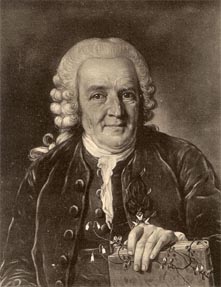 |
| |
|

 |
 |
Plants |
Animals |
The most obvious grouping
is into two groups, plants and animals.
| This classification works rather well,
and for many years we were all taught about the
Plant Kingdom and the Animal Kingdom in school.
Plants, such as redwood trees, are characterized
not by the fact that they don't run around, |
| but by the fact that they all make
their own food out of sunshine, water,
and carbon dioxide, by means of chlorophyll
(the stuff that makes plants green). |
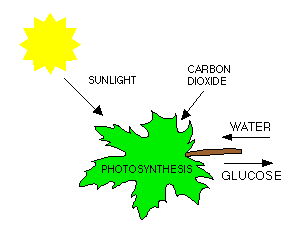
|
This process is called photosynthesis,
and may be one of the most important chemical reactions
on the face of the earth. |
| Animals, on the other hand, either
eat plants (such as deer) or they
eat other animals that do eat plants
(such as mountain lions who eat the deer). This
classification system works pretty well, and we
still talk about deer as being members of the Animal
Kingdom and redwood trees as being members of the
Plant Kingdom. This system
works well until... |

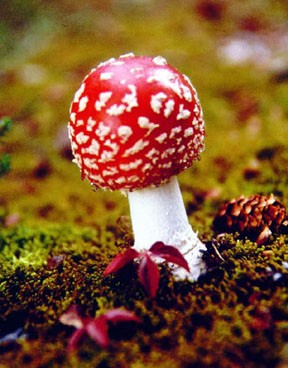 |
...until
you try to classify a mushroom! |
| |
|
| Hmmm. Let's see.
It's not green. Scientists tell us it that's because
it does not contain chlorophyll. It doesn't make
its own food, so it can't be a plant. We learned
that all plants make their own food.
|
But
it doesn't eat, either: mushrooms don't have mouths!
So it can't be an animal, because we learned
that all animals eat food. How do they get their
nourishment? Mushrooms are a type of fungus,
and all fungi (the plural of "fungus")
neither make food nor eat it: they absorb
it. Almost all of the body of a mushroom is actually
underground, made up of tiny little strings of
cells called hyphae. They are
so tiny that they are only 1/50th the diameter
of a human hair! How's that for small? The hyphae
grow out until they run into something that the
fungus thinks is tasty, and the hyphae grow into
the food (mostly dead plant and animal matter)
and absorb its nutrients directly into its own
cells.
So we need to add the Fungi Kingdom
to the Plant Kingdom and the
Animal Kingdom. Now we have three
kingdoms. This system
works pretty well until ... |
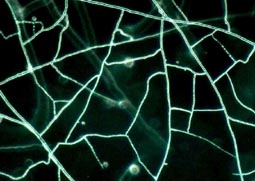
Photomicrograph
of fungal hyphae
|

|
...you
try to classify bacteria!
We all know the name, but where
are they? I haven't seen any bacteria, have you? |
|
|
 |
High-powered
microscopic views of bacteria (artificially
colored scanning electron micrographs)
|
Actually,
bacteria are found everywhere
but you can't see them anywhere because they are
so small. Millions of them are in a single drop
of water.
Bacteria are very different
from plants, animals, and fungi, and not just
because of size.
All of the other living things (plants,
animals, fungi) are made up of thousands, or billions,
or even eleventeen gazillions,
of cells, and each of their cells has a nucleus
(the scientists call this "eukaryotic"),
a central command center that tells the cell what
to do. Bacteria are always made up of just
one cell, and their cell has no
nucleus (the scientists call this "prokaryotic").
Bacteria are actually more different from plants
and animals than a mouse is from an elephant!
They really need to be in their very own kingdom,
the Kingdom Monera
("monera" comes from the Greek word
for "single", referring to the fact
that these organisms are all single-celled.)
Now we have four kingdoms.
This system works pretty well until... |
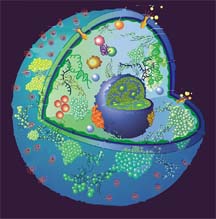
Model
of a Cell
with Nucleus in center |

... you try to decide where to stick the slime
on the rocks
of Austin Creek, the creek that flows through camp...
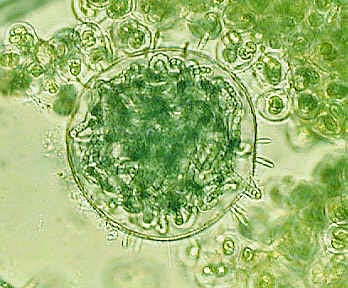 |
Where
do you stick slime?
(I mean, after
you scrape it off the bottom of your shoe!) |
| Where
on the tree of life do you place slime,
or more properly called algae?
It is not an animal,
because it does not eat things. It is not
a plant, either, because it does not
develop as a seed or spore within the mother plant.
It is not a fungus, because it
is green, and has chlorophyll, and can make its
own food. And it is not a bacteria,
because is has a cell nucleus. What is it?
Algae need their own kingdom, the
Kingdom Prostista. This group
is also the home of other organisms that don't
fit into the other kingdoms, including single-celled
organisms like paramecia and diatoms, and multi-cellular
organisms like kelp (which are just giant algae).
So we need to add the Kingdom
Prostista to Plant Kingdom,
Animal Kingdom, Fungi
Kingdom, and Kingdom Monera.
This five kingdom classification of living organisms
is a good scheme with which to look and and learn
about the wonderful world we live in. |
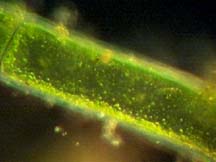 Filamentous
algae
Filamentous
algae |
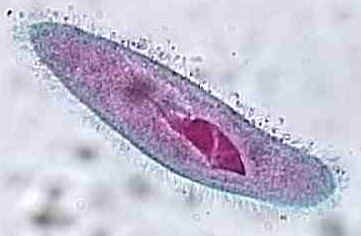 Paramecium,
a single-celled organism Paramecium,
a single-celled organism
that swims around in pond water |

Single-celled
algae
from a pond
|
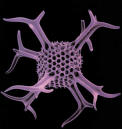 Diatom,
a single-celled organism that floats in water
and comes in the most bizarre shapes
Diatom,
a single-celled organism that floats in water
and comes in the most bizarre shapes |

The Five Kingdoms of Life can be diagrammed,
with their relationships to each other and to the presumed
origin of life:
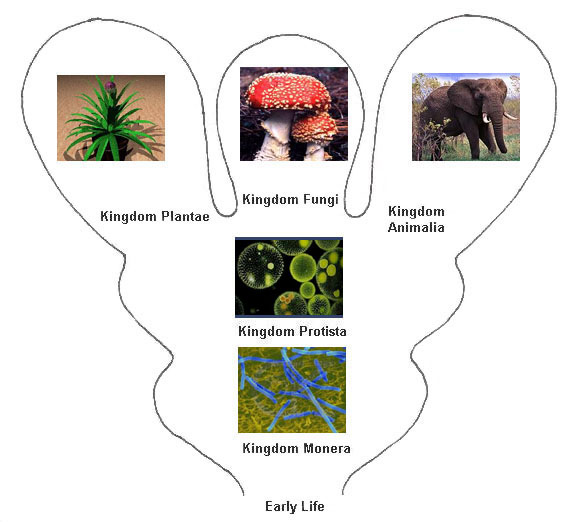

There is also a higher classification level than kingdom called a domain. There are three domains, the Archea, the Bacteria, and the Eucaryotes. These classifications were deemed necessary because it was realized that the differences between the bacteria, or prokarotes (no nucleus), were more fundamental than any differences among the eukaryotes (have a nucleus). These differences go beyond just the presence of a nucleus, and include many biochemical differences. Once the Archea were discovered, it was felt that they were as different from bacteria as they were from eukaryotes, so the three domain system was proposed. All of the eukaryotes, animals, plants, fungi, and protista, were placed into the Eukaryote Domain.

There are many web sites that discuss the Five Kingdoms,
as well as the problems posed by the discovery of archaebacteria,
the organisms that live in the boiling waters of Yellowstone
National Park or the thermal vents on the floor of the
oceans. You can just do a Google search on the term
"Five Kingdoms of Life," or you can examine:
Wayne's
World
Berlin
School
Westport
Middle School

Acknowledgements
The portrait of Carl Linneaus is from
Swedish
Museum of Natural History.
The photosynthesis illustration is from Science
Made Simple.
The picture of hyphae came from George
Barron's website on Fungi.
The mushroom came from the Hands
On the Land, a national network of field classrooms.
The purple bacteria were photographed by Dr.
R. Wirth, of Regensburg, Germany, the paramecium
is from the State
University of New York.
|

|

